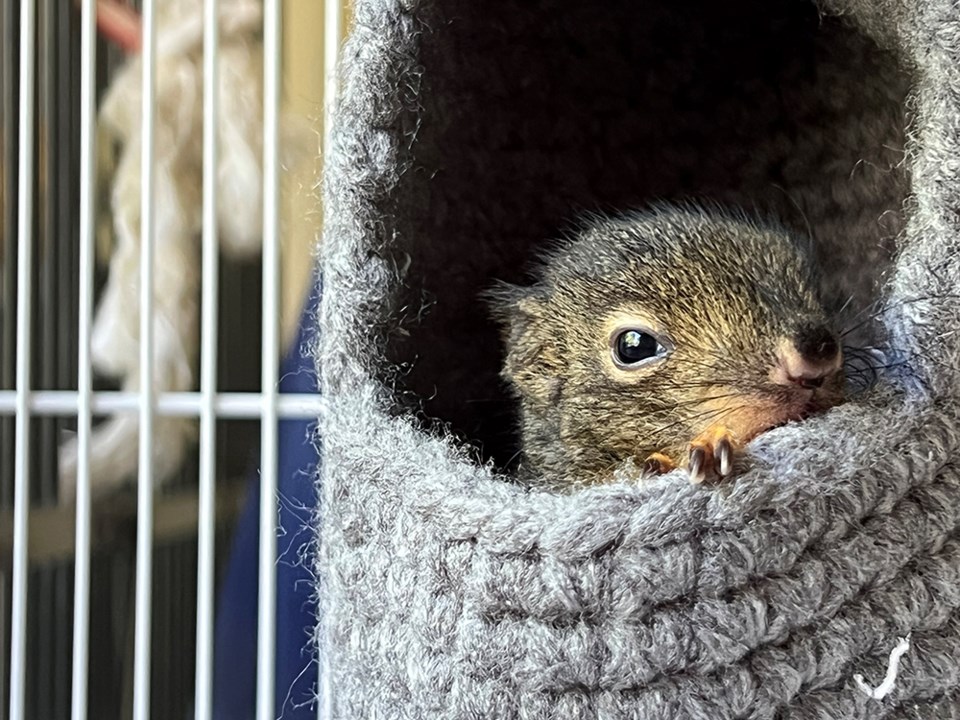LATE BABIES: Two tiny squirrels, one flying and one Douglas, were both found with their eyes still closed by very gentle big dogs.
The flying squirrel had fallen out of its nest up Valentine Mountain and had the tiniest of teeth; the Douglas, twice the size of the flying but still very young, was found in Lund.
Placed in crocheted pouches to keep them warm and cozy, both gained weight quickly. Initially they were fed formula at Powell River Orphaned Wildlife Society until their eyes were open, then they graduated to devouring chopped up carrots, apples, peaches and berries, with a lot of fir cones and hazelnuts.
The flying squirrel received a first-class ferry ride to MARS (Mountainaire Avian Rescue Society) in Merville, which has the proper facilities to care for him over the winter. He will return to the qathet region in the spring for release.
The Douglas squirrel grew rapidly and was not shy about demanding his formula bottle, but he quickly outgrew this baby stage and let us know that he wanted out. He was returned to the tree his nest had been in and quickly vanished from sight.
Squirrels do not have a true hibernation but rather, go into a “torpor” from which they can wake and eat as needed.
Flying squirrels are not capable of the same flight as birds or bats but are able to glide from one tree to another with the aid of a patagium, a furry, parachute-like membrane that stretches from wrist to ankle. Their long tails provide stability.



